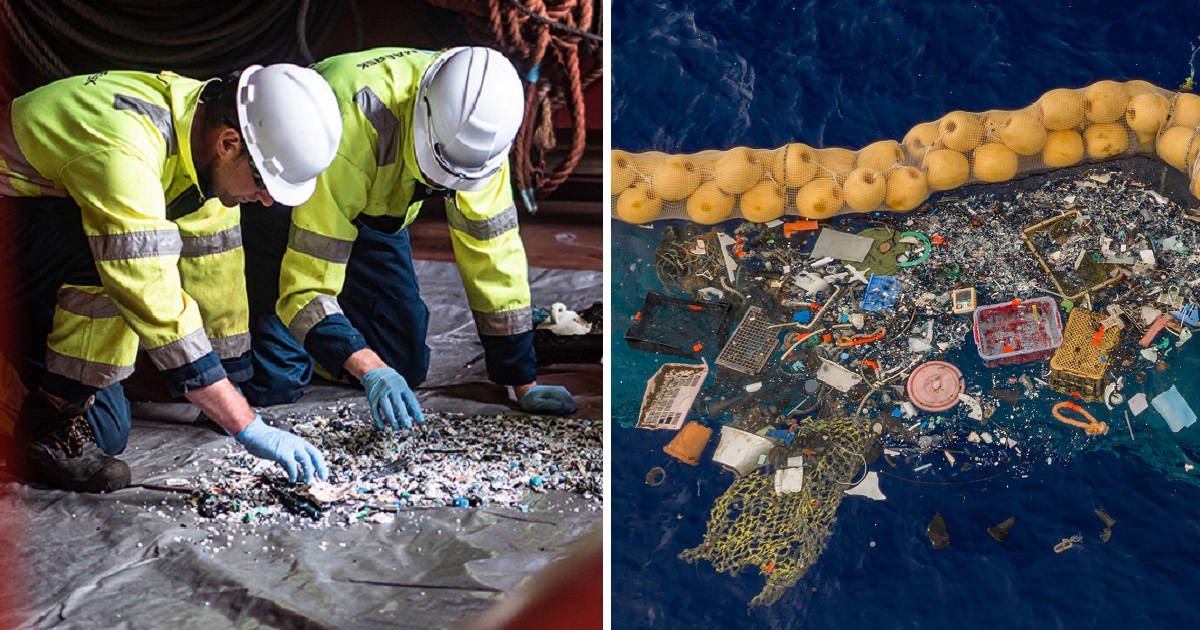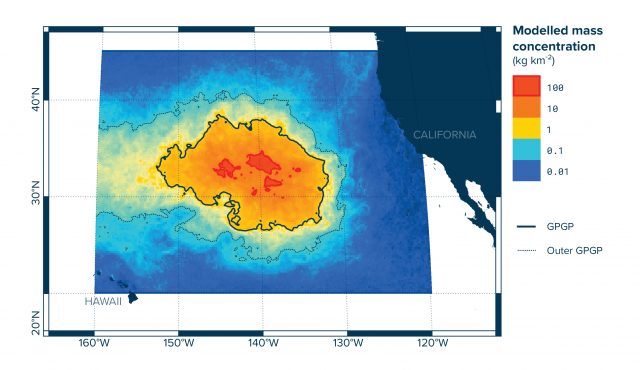
Back in 2013, 18-year-old Dutch inventor Boyan Slat had founded The Ocean Cleanup in the Netherlands to develop a system that would clean up the Great Pacific Garbage Patch, the "Pacific trash vortex". This patch is an immense concentration of garbage in the north-central Pacific Ocean, which is more than twice the size of Texas.
And the fruits of this multidisciplinary work are finally starting to pay off.
The Great Pacific Garbage Patch is also referred to as an island made of garbage floating in the middle of the Pacific. Is that true, though? While it's technically not actually a solid island, it does look just like one at first glance.
It turns out that the plastic is dispersed, forming giant debris fields. According to Nature, the average concentration of the Great Pacific Garbage Patch is about 60 kg per square kilometer, and peaks at some hundred kgs per square kilometer.
The Ocean Cleanup debuted in 2013 a U-shaped device that passively collected plastic in its fold like a gigantic arm. In the beginning, the system hit several snags, including a flaw that caused the plastic to spill back into the ocean. Several improvements were needed.

Modeled mass concentration of plastic in the Great Pacific Garbage Patch.
However, in October 2019, the group announced that the device was capturing and retaining plastic. For the first time, some of the garbage was brought back to shore. The group hauled sixty bags of plastic debris into the Vancouver Harbour.
The Ocean Cleanup intends to recycle the plastic and turn it into some product. Slat said that the team hoped to start selling it by September 2020.
The first plastic has arrived on shore. Next stop: September 2020, when we aim to launch the first product made out of plastic from the Great Pacific Garbage Patch. Learn more: https://t.co/hCVDrzhTQJ pic.twitter.com/DCBiqceucy
— The Ocean Cleanup (@TheOceanCleanup) December 12, 2019
When The Ocean Cleanup hauled the plastic to shore, it also marked the end of mission one. With that, it was proven that its plastic-catching system worked. The organization hopes to clean up half of the garbage patch in the next five years.
Actively going after plastic with vessels and nets could be costly of both time and funds, labor-intensive, and harmful to sea life.
It is sorted, put out to dry, weighed, and tagged. On board, the ocean plastic is processed and classified before it is ready to go on shore. Make sure to tune in on December 12th to see what we will do with it next. pic.twitter.com/D2gsHYdo4p
— The Ocean Cleanup (@TheOceanCleanup) December 5, 2019
These systems will move slower than the plastic due to the parachute anchor. The systems' slower pace creates a consistent relative speed difference between the system and the plastic, allowing the plastic to be concentrated. That's what passive means for this project.
Good question! According to our ocean trials, our technology is catching microplastics down to 1mm in size. Read more about our recent advancements here: https://t.co/u4ALiZZEs5
— The Ocean Cleanup (@TheOceanCleanup) December 6, 2019
Also, be sure to tune in on December 12th for some exciting updates!











COMMENTS